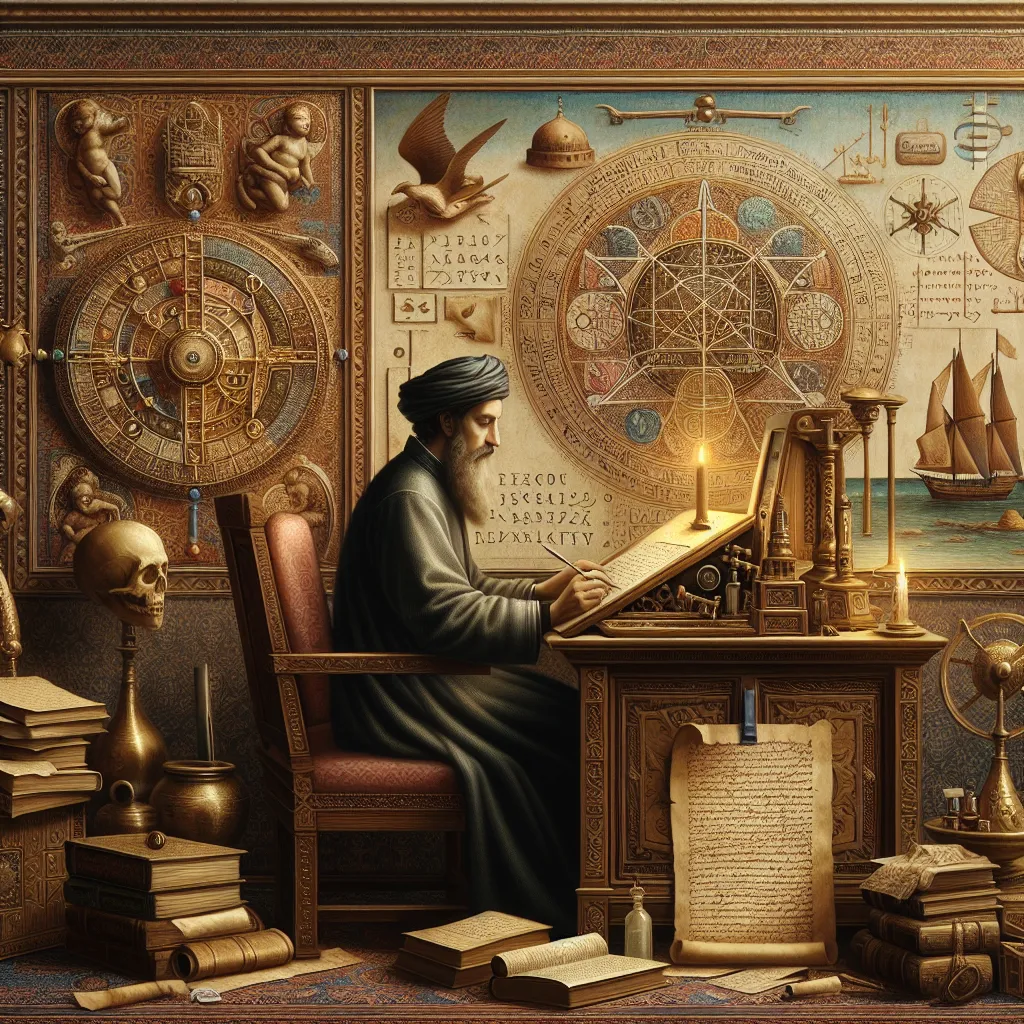
- Published on
- Authors

- Name
- You
John Dee: The Enigma of Cryptography and the Occult
John Dee, the Renaissance polymath, is often remembered for his contributions to mathematics, astronomy, alchemy, and the occult. However, one of his lesser-known, yet profoundly influential, contributions is in the field of cryptography. This article delves into how Dees work in developing ciphers and cryptographic methods bridged the gap between advanced scientific principles and mystical wisdom, leading to groundbreaking innovations in secret communication.
The Intersection of Science and Mysticism
John Dee lived in an era where the lines between science, mathematics, and mysticism were highly fluid. His endeavor to unify these domains laid the foundation for his work in cryptography. Dee’s penchant for secrecy and encrypted communication was not merely a pursuit of intellectual curiosity but also a necessity, given his involvement in political and espionage activities.
Table 1: Historical Context
| Event/Society | Year/Period | Significance |
|---|---|---|
| Renaissance | 14th to 17th Century | Revival of classical learning and wisdom |
| Elizabethan England | Late 16th Century | Heightened intrigue and political espionage |
| Scientific Revolution | 1543-1687 | Emergence of modern scientific method |
| Angelic Conversations | 1582-1589 | Dees scrying sessions to communicate with angels |
Dee’s genius was in synthesizing his knowledge across various domains to address real-world problems, including the secure transmission of information—a critical need for any state or individual involved in espionage and diplomacy.
Dee’s Development of Ciphers
Among Dee’s cryptographic innovations, the Monas Hieroglyphica stands out. Designed ostensibly as a universal symbol embodying all alchemical knowledge, it is also suspected to hide encrypted messages. In addition, Dee is believed to have contributed to the creation of more practical ciphers used for covert communication.
Basic Cipher Techniques
Substitution Ciphers: Dee utilized methods where each letter of the plaintext is substituted with another letter, symbol, or number according to a specific system.
- Example:
Message: HELLO Cipher: KHOOR (Using Caesar Cipher with a shift of 3)Transposition Ciphers: These involved the rearranging of letters according to a defined system, creating a permutation of the original message.
Polyalphabetic Ciphers: More complex schemes involving multiple alphabets to encrypt a single message, likely influenced by Dee’s mathematical prowess.
Table 2: Notable Ciphers and Their Functions
| Cipher Type | Description | Historical Usage |
|---|---|---|
| Caesar Cipher | Shift-based substitution | Used in Roman military communication |
| Vigenère Cipher | Polyalphabetic substitution | Enhanced security over simple substitution ciphers |
| Monas Hieroglyphica | Alchemical, mystical, and possible cryptographic use | Dee’s symbolistic cipher with hidden meanings |
Cryptographic Machine
Dee is rumored to have envisaged an early form of cryptographic machinery. While no physical device from Dee’s time survives, his theoretical frameworks hint at principles that resonate with modern-day encryption algorithms.
Conclusion: The Legacy of John Dee
John Dees contributions to cryptography serve as a testament to his multidisciplinary genius. By intertwining advanced scientific methodologies with mystical insights, he developed cryptographic systems that were ahead of his time. His work not only reflects the Renaissance spirit of curiosity and integration but also underscores the timeless importance of secure communication.
Modern cryptography, with its roots in these early innovations, continues to evolve. Dee’s legacy is a reminder that the fusion of science and mysticism can lead to groundbreaking advancements, forever changing how humanity communicates and perceives the secrets of the universe.
Further Reading and References
- Yates, Frances A. The Occult Philosophy in the Elizabethan Age. (London: Routledge, 1979).
- Clulee, Nicholas. John Dee’s Natural Philosophy: Between Science and Religion. (London: Routledge, 2013).
- Fell Smith, Charlotte. John Dee: 1527-1608. (Oxford: Clarendon Press, 1909).
Whether viewed through the lens of advanced science or mystical wisdom, John Dees work remains a captivating chapter in the history of cryptography and secret communication.
